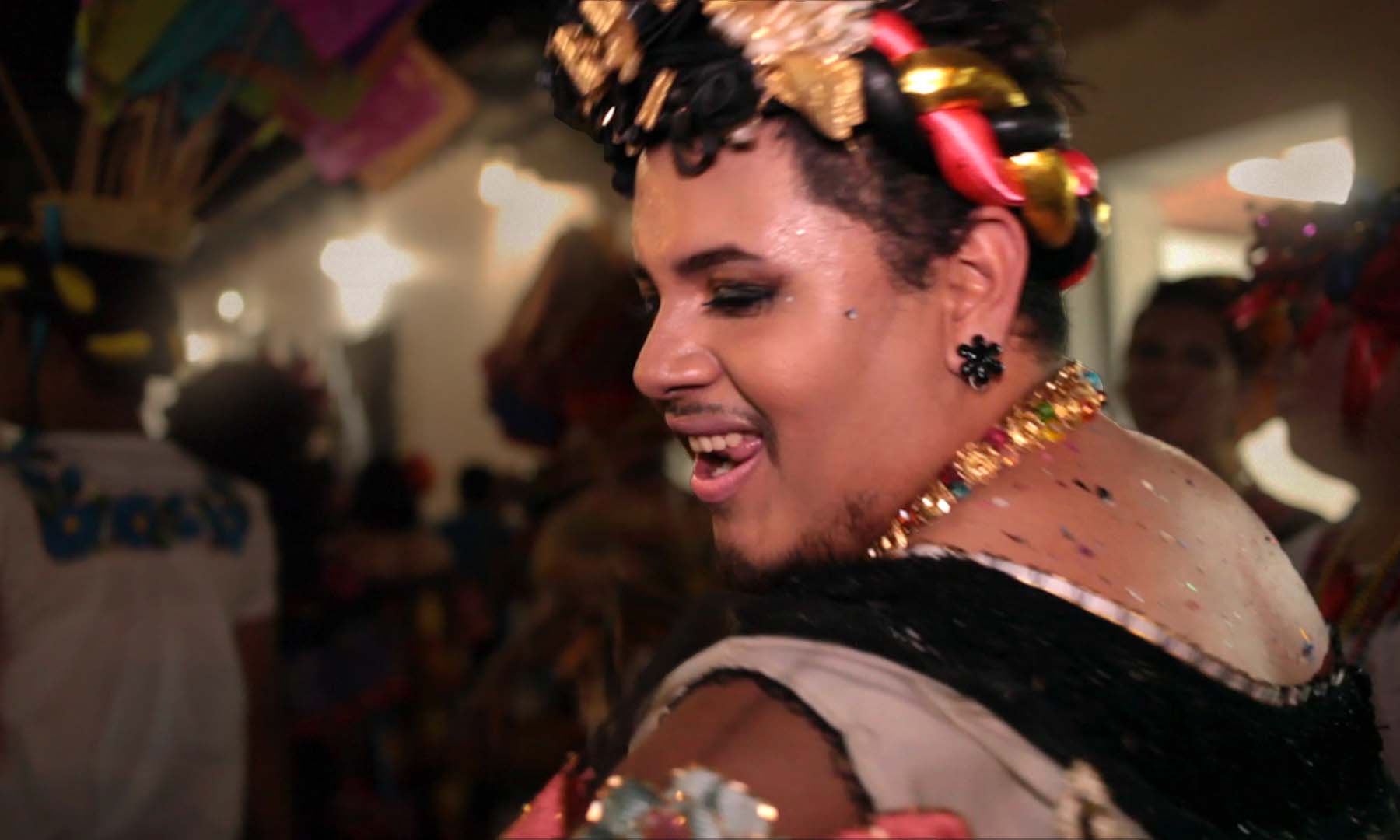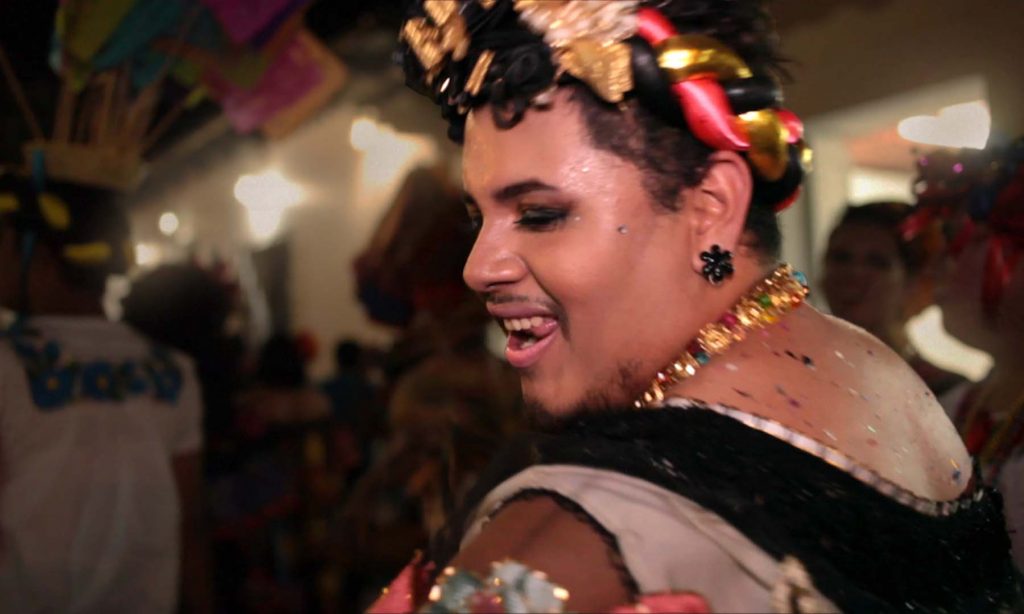Every year, in the small town of Chiapa de Corzo in Chiapas, Mexico, thousands of men put on colorful skirts, wear makeup and march through the streets during the Fiesta Grande. They’re known as the Chuntá, and they’re the subject of Genevieve Roudané’s documentary of the same name. Las Chuntá (The Chuntá) immerses audiences into the vibrant celebrations in Chiapa de Corzo where gender-bending men stand in for larger conversations about machismo and homophobia that remain rampant in certain parts of Mexico. The documentary weaves together testimonials from men who have been cross-dressing once a year for decades, with dazzling dance sequences set against fireworks and nighttime celebrations. Las Chuntá is both a scrappy chronicle and an ethnographic portrait of an unlikely subculture that’s touchingly timely.
As Roudané puts it in her director’s statement, “Now is the time for films that challenge stereotypes about queer communities, Latinx people, and all those whose identities challenge societal norms. In a time of news cycles filled with hate, this new story of brotherhood and creativity is revolutionary.” As the film continues to make the festival rounds, below are five key things we learned from this intimate documentary.
Las Chuntá screened as part of the 2019 Outfest Film Festival.
1
The Origin of the Chuntá is Unknown
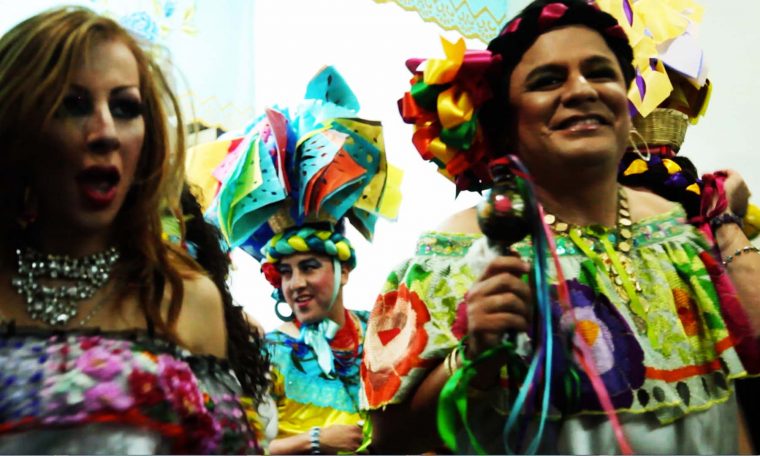
As Gerardo Madrigal, one of the leading members of one of the Chuntá bands, puts it, “We don’t know why men began dressing up as women.” There are, though, several theories. One theory is that a local legend cast the Chuntá as the indigenous servants of a Spanish woman in the 1700s, who ended up thanking the town with a large party after her son was cured of an illness. Another theory traces back the origins of the Fiesta Grande (which celebrates Saint Sebastian) to possible indigenous celebrations that predated it and honored, instead, the New Year.
2
The Chuntá Have Traditionally Been Straight Men
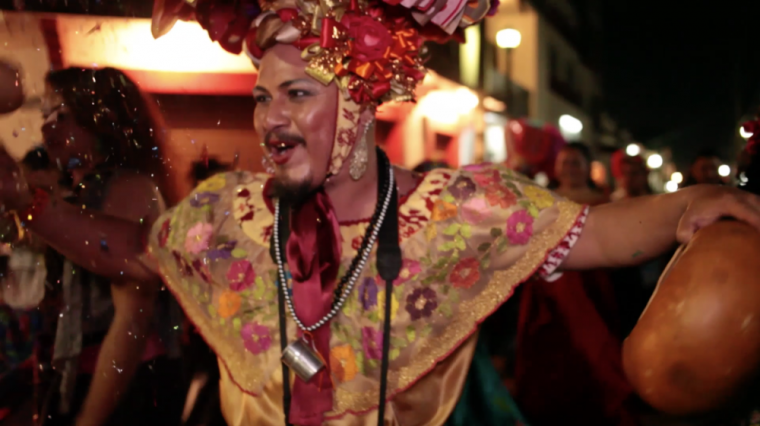
If men cross-dressing made you think this was a community of gay and trans people, Roudané’s documentary makes it clear that for much of its history, the Chuntá is comprised of heterosexual men. It explains why many of the Chuntá featured in the film don’t bother to shave or soften their features: They’re not drag queens. They’re not trans women. For many, dressing up as a woman actually reinforces rigid gender norms and customs that are central to heteronormative beliefs.
3
A New Generation of Chuntá Are Embracing Its Queer Undertones
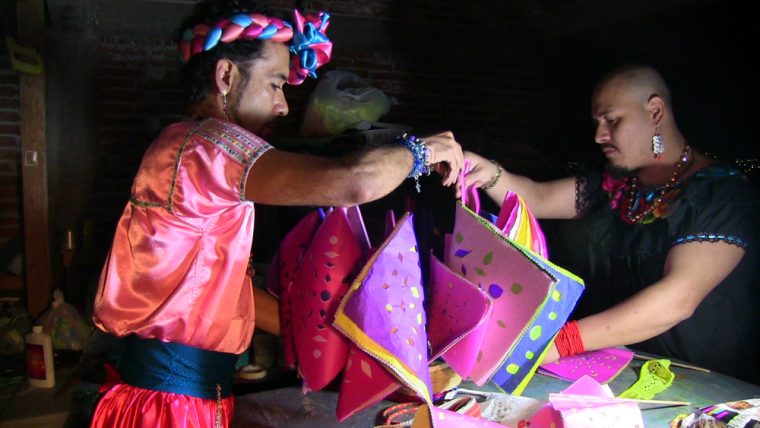
While we learn that openly gay men have been shunned by Chuntá groups and alienated for not upholding traditional values, we also meet a new generation of fabulous men who relish the ability to embrace the Chuntá history and push it forward. That means not just using different colors and fabrics when creating elaborate headpieces and outfits, but also making sure the Fiesta Grande dances are a welcoming and inclusive space for all.
4
Queer Chuntá Face Homophobia and Transphobia
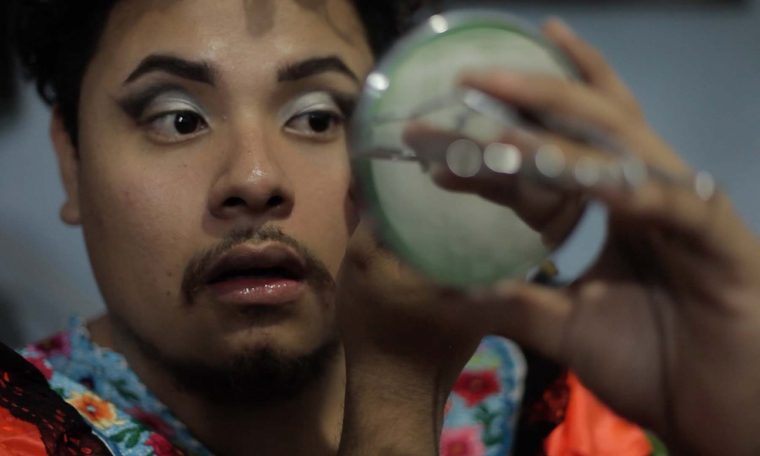
Esther “Tia They” Noriega has been a pioneer in opening up the doors for an LGBTQ-inclusive celebration. Her “gang” (as these various dance groups are labeled) openly accepts anyone who wants to be a part of the night’s proceedings. That alone sets her apart. Other gangs are much more restrictive; they openly announce that they don’t want any gay men or trans people in their gangs, noting that there’s nothing queer to cross-dressing. In fact, to them, Tia They’s gang is actually contaminating the Chuntá tradition. It’s why she’s become a godmother of sorts to many young queer and trans women in the area, who face (sometimes state-sanctioned) violence in their every day lives.
5
A Welcoming LGBTQ-friendly Community Has Slowly Emerged
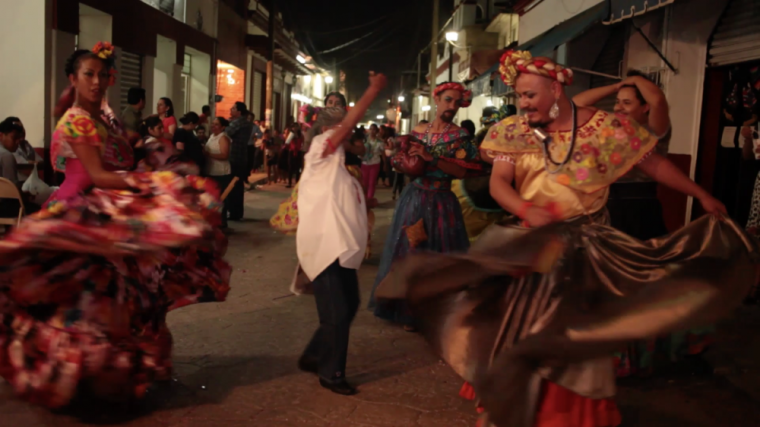
Tia They’s gang and their neon-colored modern attire is pushing a welcoming message to new generations now getting involved with this tradition. Chuntá dancer Isauro Vidal, who’s faced homophobia and exclusion when he’s dressed up, acknowledges why many younger queer men gravitate toward this tradition: “I like dressing as a Chuntá,” he says, “because to me it represents the god of fertility, the duality between man and woman. That duality creates a moment in the Fiesta, when we’re all together, and you see the ideal world you wish existed. It’s about accepting ourselves just as we are. Respecting each other, and dancing with joy. For me it’s a very emotional thing to do a fertility dance. It means belonging to the earth, belonging in this world.”



